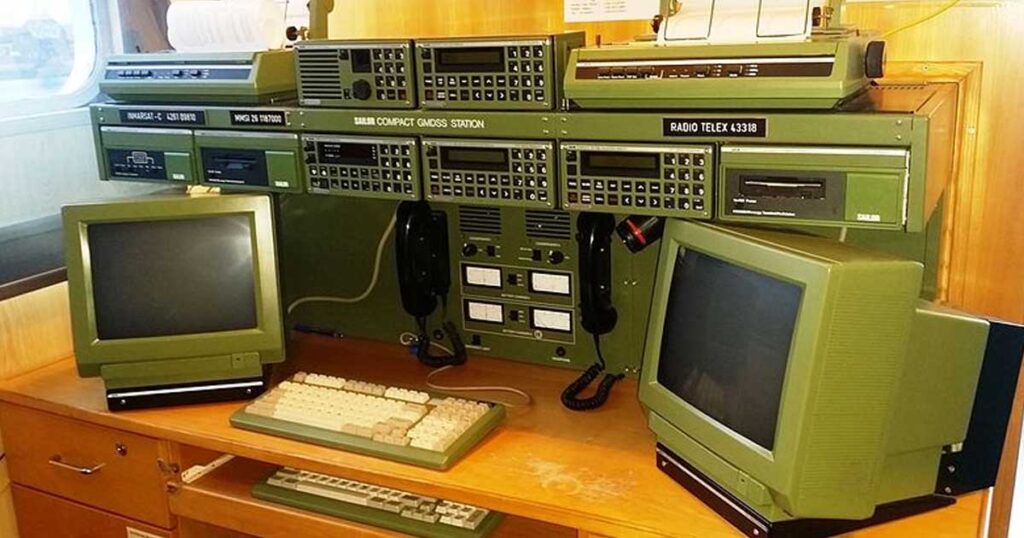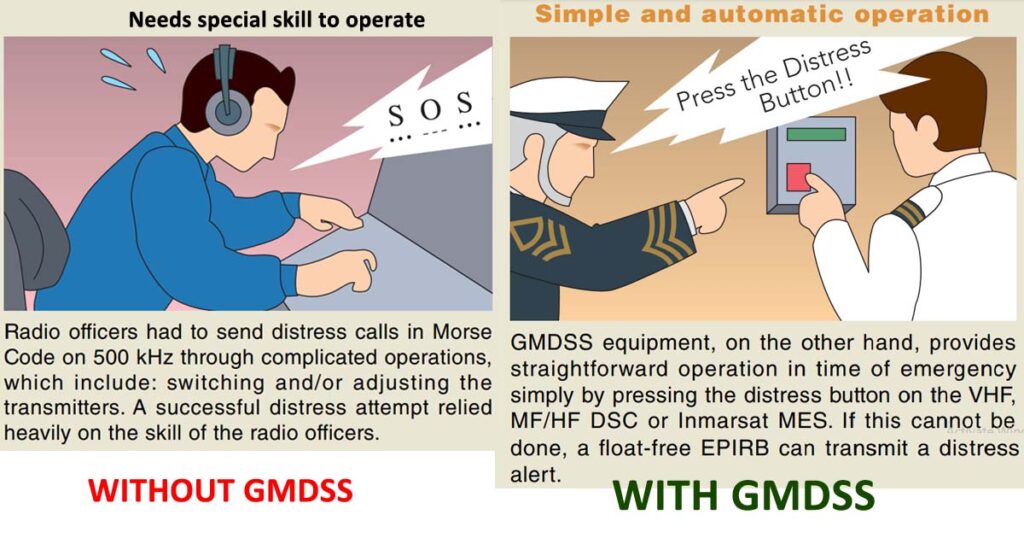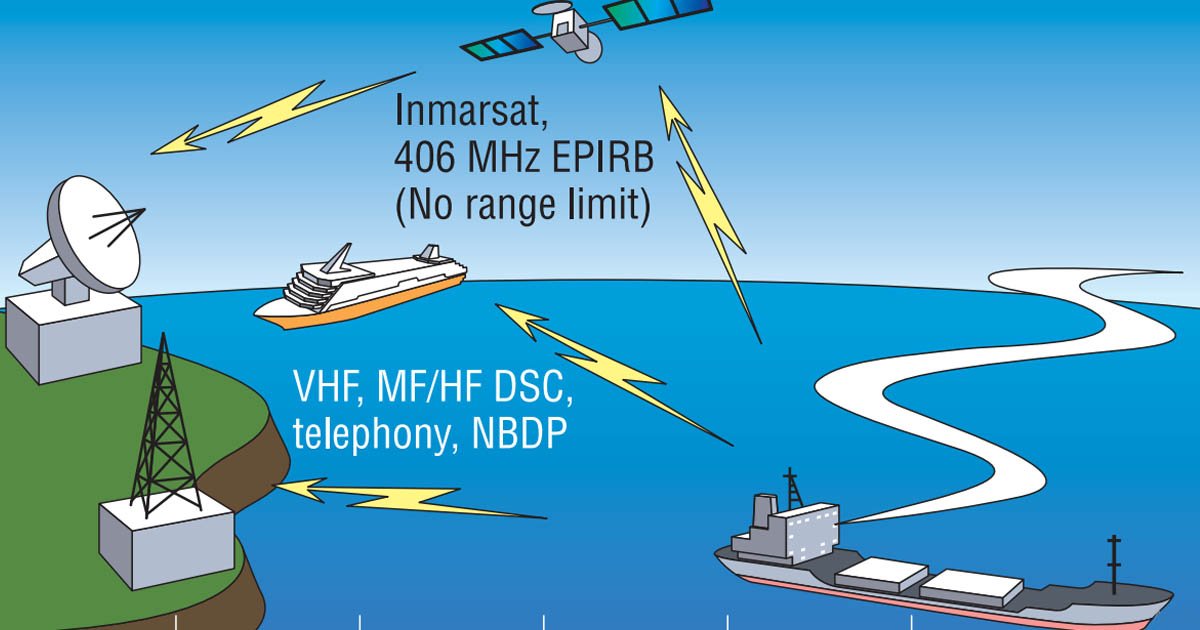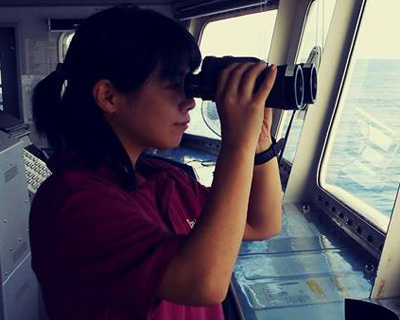GMDSS revolutionized the way seafarers navigate the seven seas.
Before its invention, a ship can not leave the port if its Radio Officer is absent.
Since every communication was sent and received via Morse Code, Radio Officers were responsible for decoding the dots and dashes, especially the distress alerts.
But everything changed with the development of the Global Maritime Distress and Safety System (GMDSS).
Cargo ships and passenger ships started dropping Morse Code as they transitioned to the new system and learned how to operate the various components of GMDSS.
We’ll talk about these components here and some more requirements based on their sea areas.
Key Takeaways
- GMDSS uses satellite and terrestrial systems for ship distress alerting and communications.
- Different sea areas dictate the minimum radio equipment required for each vessel.
- GMDSS is integral for swift response and coordination during maritime emergencies.
What is GMDSS or the Global Maritime Distress and Safety System
GMDSS is a worldwide coordinated maritime distress system designed to provide the rapid transmission of distress messages.
This system provides a link between SAR authorities ashore and shipping in the immediate vicinity of a vessel in distress or in need of assistance so that both land and sea resources can assist in coordinated SAR operations with minimal delay.
It is Global because vessels can use it anywhere in the world. Maritime since it is developed for ships.
Distress because its primary function is for distress communications while also performing Safety alerts. And System due to its integrated nature with other equipment.
Key Components of GMDSS
GMDSS comprises different equipment, each one having specific functions, all centered around the core aspect of distress alerting.
To identify if a piece of equipment on board is part of the GMDSS, simply check its function if it is capable of sending or receiving distress alerts.
Depending on the size and trade area, merchant ships must check which of these components they must carry.
1. 406 MHz EPIRB or the Emergency Position-Indicating Radio Beacons
A 406 MHz Satellite EPIRB sends a distress signal to the polar-orbiting COSPAS-SARSAT Satellite, which in turn relays the signal to Local Earth Stations (LES).
For placement, you must mount this EPIRB in a float-free location.

2. Search and Rescue Transponder or SART
SART is a homing device that releases a signal that the X-Band marine radar picks and shows on the PPI.
Cargo ships/ MODUs (Mobile Offshore Drilling Units) of sizes between 300GT and 500GT must carry only one SART.
Cargo ships greater than 500GT and all passenger ships must carry two SARTs, one on each side of the vessel. This makes it easy to take them and bring them to the survival craft during abandon ship.
3. Portable VHF Transceivers
Portable VHF Transceivers are handheld devices used in maritime communication for ship-to-ship or ship-to-shore communication.
They can be set to Channel 16 which is the calling and listening channel for for distress, urgency, and safety communication.
Cargo ships/ MODUs of sizes between 300GT and 500GT are only required to carry two VHF transceivers.
Those greater than 500GT and all passenger ships are required to carry three VHF transceivers.
4. VHF Installation
VHF Installation refers to the fixed radio installations on board that operate on Very High Frequencies (VHF)
They are capable of operating on VHF CHs 06, 13, and 16, as well as maintaining continuous DSC monitoring on VHF CH 70.
Lastly, they are capable of initiating digital selective calling distress alert transmissions on CH 70.
Frequency Bands
If you’re wondering, the frequency bands mentioned here are as follows:
- Medium Frequency (MF): 300 KHz to 3 MHz
- High Frequency (HF) also known as shortwave radio: 3 MHz to 30 MHz
- Very High Frequencies (VHF): 30 MHz to 300 MHz
5. NAVTEX
NAVTEX, or Navigational Telex, is a navigational tool that allows ships to receive broadcasted navigational and meteorological warnings, weather forecasts, and other urgent marine safety information.
A ship only requires one NAVTEX receiver on board.
If NAVTEX service is not available, the vessel must have INMARSAT Enhanced Group Calling (EGC) system or HF direct printing telegraphy to receive MSI.
6. INMARSAT
INMARSAT is a system of global satellites that provides worldwide communication services. It also ensures reliable and widespread coverage of maritime distress and safety communication.
Inmarsat originated from the International Maritime Satellite Organization with a direct order from IMO.
7. Digital Selective Calling (DSC)
DSC is primarily intended to initiate ship-to-ship, ship-to-shore, and shore-to-ship radiotelephone communications on VHF, MF/HF, and radio-telex communications on MF/HF.
DSC calls can also be made to individual ships or groups of ships.
In emergency situations, DSC distress alerts, which consist of a preformatted distress message, are used to initiate emergency communications with ships and rescue coordination centers.
IMO RESOLUTION MSC.511(105) sets more standards for the installation and use of DSC.

General Operator’s Course
When I was training to get my Certificate of Competency (COC), one of the courses we had to take was GMDSS GOC.
The training covered the nuances of distress communication, safety alerts, and the coordination of maritime emergency responses.
Understanding the operation of crucial equipment such as Emergency Position-Indicating Radio Beacons (EPIRBs), Search and Rescue Transponders (SARTs), and Digital Selective Calling (DSC) systems became second nature.
GMDSS Equipment Summary per Sea Area
GMDSS Sea Areas refer to different maritime radio communication zones that are based on proximity to shore-based facilities:
The different Sea Areas define the minimum radio equipment needed on board ships depending on how far they operate from the coast.
SOLAS Chapter IV – Radiocommunication defines them as the following:
Sea Area A1
An area within the radiotelephone coverage of at least one VHF coast station in which continuous digital selective calling (CH 70) alerting and radiotelephony services are available (approx. 20-30 Nautical Miles).
Equipment for Sea Area A1 may include:
- 406 MHz EPIRB
- VHF Installation
Sea Area A2
An area, excluding Sea Area A1, within the radiotelephone coverage of at least one MF coast station in which continuous DSC (2187.5 kHz) alerting and radiotelephony services are available.
Distance from the nearest MF coast station is within approx. 100 Nautical Miles (NM) but excludes Sea Area A1.
- VHF Installation
- MF Installation
- 406 EPIRB
Sea Area A3
An area, excluding sea areas A1 and A2, within the coverage of an INMARSAT geostationary satellite in which continuous alerting is available.
This is approximately between 76° N and S and excludes Sea Areas A1 and A2.
- VHF Installation
- MF/HF Installation or INMARSAT Installation
- 406 EPIRB
Sea Area A4
The remaining sea area outside Sea Areas A1, A2, and A3 which is basically the Polar Regions.
- VHF Installation
- MF/HF Installation
- 406 EPIRB
Importance of GMDSS Equipment
GMDSS’s significance becomes evident when a ship faces distress while in the middle of the ocean.
The nearest land could be hundreds or thousands of miles away, with rescue helicopters taking three or more hours to arrive.
Since emergencies can be abrupt, the automatic alerting feature of the GMDSS ensures that somebody out there knows you are in danger.
And you can be sure that they are already preparing for rescue efforts.

Nine Functional Requirements of GMDSS
GMDSS is a combination of systems and sub-systems using both satellite and terrestrial communication infrastructures.
It must provide every ship with the following basic communications function listed below.
Ships, while at sea, must be able to transmit and receive:
1. Ship-to-Shore distress alert by two separate and independent means.
2. Shore-to-Ship distress alerts
3. Ship-to-ship distress alerts
4. SAR coordinating communications
5. On-scene communications
6. Signals for locating
7. Marine Safety Information (MSI)
8. General radio communications to and from shore
9. Bridge-to-bridge communications
All officers must have a GMDSS General Operators Certificate for them to operate any marine radios these equipment.
Understanding its components and functions helps seafarers navigate with confidence and prepare for any situation.
May the winds be in your favor.



0 Comments